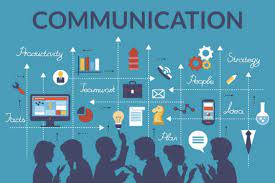Active listening and feedback techniques are vital for effective communication and overcoming barriers. Here are some strategies to enhance your active listening skills and provide constructive feedback:
Active Listening Techniques:
- Give Your Full Attention: Focus on the speaker and eliminate distractions. Maintain eye contact, face the speaker, and show genuine interest in what they are saying.
- Avoid Interrupting: Allow the speaker to express their thoughts without interruption. Avoid finishing their sentences or jumping to conclusions. Listen patiently until they have finished speaking.
- Practice Empathy: Put yourself in the speaker’s shoes and try to understand their perspective. Show empathy by acknowledging their emotions and validating their feelings.
- Use Nonverbal Cues: Utilize nonverbal cues to demonstrate your attentiveness and understanding. Nod your head, smile, and use facial expressions to convey interest and engagement. Maintain an open body posture.
- Paraphrase and Summarize: Repeat or rephrase the speaker’s words to confirm your understanding. Summarize key points periodically to ensure alignment and show that you are actively listening.
- Ask Clarifying Questions: Seek clarification if something is unclear or if you need additional information. Ask open-ended questions to encourage the speaker to elaborate and provide more details.
Feedback Techniques:
- Be Specific and Timely: Provide feedback as soon as possible after the relevant event or conversation. Be specific about the behavior or action you are addressing, focusing on observable facts rather than making generalizations.
- Use the “Sandwich” Approach: Begin with a positive or appreciative comment to set a constructive tone. Offer the feedback or address the issue, providing suggestions for improvement or alternative approaches. End on a positive note by highlighting strengths or potential growth opportunities.
- Focus on Behavior, Not Personality: Direct your feedback towards specific behaviors or actions rather than making personal attacks. This helps the recipient understand what they can change or improve without feeling attacked or defensive.
- Use “I” Statements: Frame your feedback using “I” statements to express your own perceptions and experiences. For example, say, “I noticed that when you interrupted me, I felt disregarded,” rather than, “You always interrupt people and don’t listen.”
- Offer Constructive Suggestions: Provide actionable suggestions for improvement. Offer alternative strategies or approaches that may lead to better outcomes. Be supportive and offer assistance if needed.
- Seek Recipient’s Perspective: Encourage the recipient to share their perspective on the issue. Listen actively and demonstrate empathy. This helps foster a two-way dialogue and promotes mutual understanding.
- Follow Up and Provide Support: Follow up on feedback given to ensure progress and offer support if necessary. Provide resources, guidance, or training opportunities to help the individual develop their skills and address any areas of improvement.
Remember, active listening and feedback are ongoing processes. Continuously practice these techniques to improve your communication skills and establish a culture of open and effective communication.
SHARE
